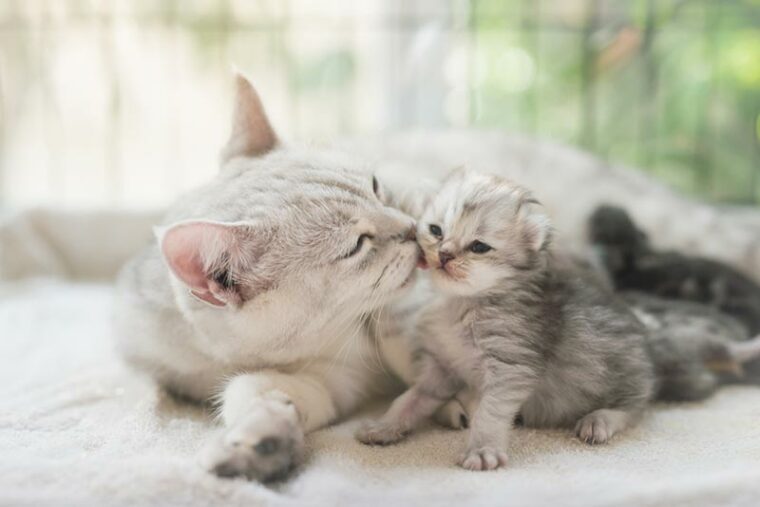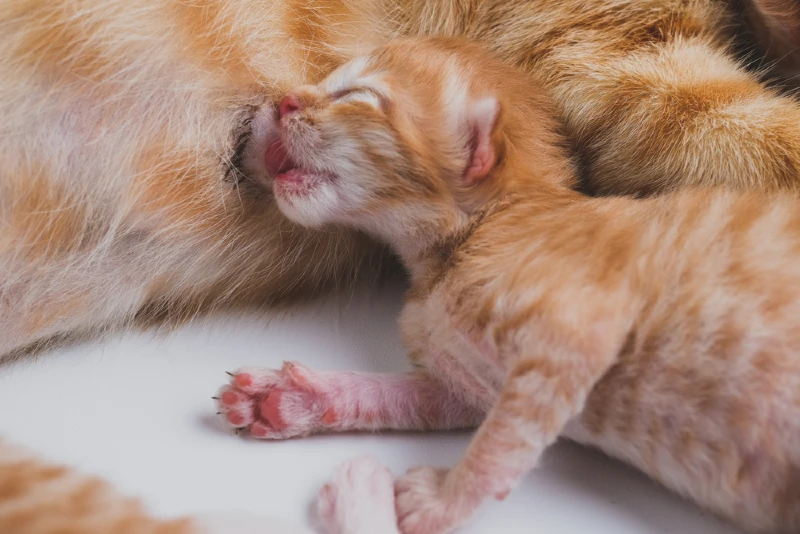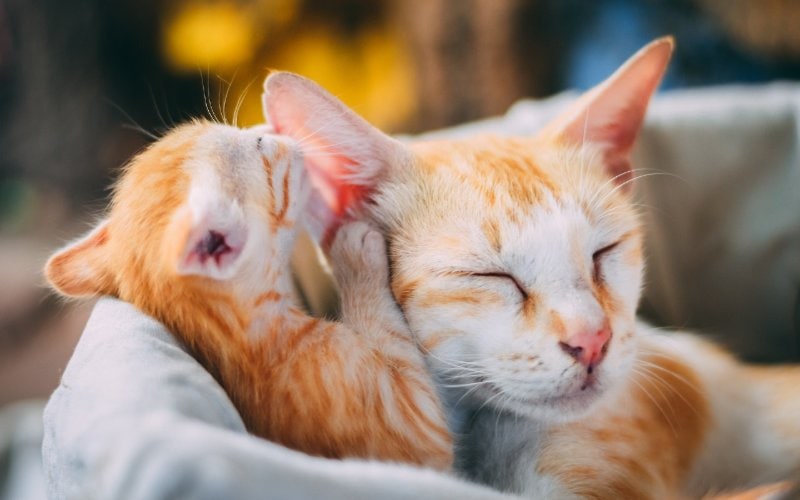
Pregnant cats typically produce an average of 4-6 kittens, but litter sizes can vary quite a bit. If your cat only has one kitten, you might wonder what’s going on. Having one kitten can be completely normal, and there are several reasons why this may occur, which include her age, breed, size, and the health of the developing fetus.
In this article, you’ll learn why your cat might only have had one kitten and why you’ll need to check if your kitty is actually finished giving birth. We’ll also give you some tips to keep mom and her kitten healthy and happy.
The 4 Reasons Your Cat May Only Have One Kitten
The most common reasons your cat may only have one kitten include her age, breed, size, and the health of the developing fetus.
1. Age
First-time kitty mothers often have smaller litters.1 If this is your cat’s first litter, she may be more likely to have a single kitten. Older cats also tend to produce fewer kittens,2 although the reason for this is yet not clear and the age effect on litter size is not considered significant.
2. Breed
Some breeds produce smaller litters and may only have a single kitten at a time. A study from 2006 that looked at the pedigree cats in the UK identified Burmese,3 Siamese, and related breeds (Asians and Tonkinese) as having a higher overall mean litter size, while Persians, Himalayans, Birmans, and exotic breeds like the Abyssinian and related Somali breeds typically have small litters. Regular domestic shorthair or mixed breed cats could produce as many as 10-12 kittens at a time.

3. Size
The size of both the mother and father cats could also impact the number of kittens in the litter, but there isn’t sufficient research data available to support this claim.
4. Development Factors and Early Abortion
Sometimes, cats only have one kitten because none of the other embryos develop into fetuses and they get reabsorbed by the uterus in the first half of pregnancy. Some of the identified risk factors for pregnancy loss include trauma and systemic disease in the queen, fetal abnormalities (often genetic or chromosomal), specific infections such as feline leukemia virus and Chlamydia, and nutritional deficiencies.
Your Cat Might Fool You, So Watch Out…
Before assuming your cat only has one kitten, you’ll need to ensure you aren’t dealing with a labor pause, also called interrupted labor. Cats are typically pregnant for 60-67 days, with delivery most often occurring at 63-65 days. Once labor begins, kittens are usually born relatively quickly, with a 10–60-minute pause between each delivery.
However, some mother cats may give birth to 1-2 kittens and then pause their labor for 24 hours before continuing. Interrupted labor is common in cats and is considered normal. The mother will stop straining and rest, nursing her already-born kittens. She will eat and drink. This resting stage may last up to even 36 hours, after which labor restarts and the remainder of the litter is born normally and easily. If this happens, you might be fooled into thinking your cat has only had one kitten. However, keep in mind that if you already know that your cat is expecting more kittens but the labor is interrupted for over 24 hours, it is recommended to seek veterinary assistance.
On the other hand, if your cat strains for 45-60 minutes without producing another kitten, you should have her checked by a veterinarian immediately.
Although most cats can give birth without help, you should still observe the process in case of any complications, as the likelihood of needing a cesarean section is higher in cats with smaller litter sizes. Emergency veterinary care is required if you notice any of the above-mentioned signs.

Keeping Mom and Her One Kitten Healthy
Once you’re confident (your vet can take an x-ray to confirm) that your cat only had one kitten, it’s time to keep the mom and baby healthy. For starters, get them checked by a vet within 24 hours.
Feed the mother cat a high-protein diet, typically kitten food, to ensure she can produce adequate amounts of good-quality milk and maintain a healthy weight. Mother and kitten should be kept in a quiet, safe location. Kittens can’t keep themselves warm until they’re 3-4 weeks old, sometimes even up to 7 weeks, so make sure they are in a warm and secure box with soft padding. The box should be partially open so that the mother can get in but the kitten cannot wander off, away from drafts, and possibly with an external heat source like a warming pad underneath it. Make sure the pad is safe and that it never comes in direct contact with the kitten’s skin, as it may lead to burns.
Monitor the family to ensure the mother is letting the kitten nurse but keep handling to a minimum for about the first 7–14 days to avoid stress and not to interrupt their bonding. Once the kitten’s eyes are open, you can begin socializing with them.
Start offering solid food when the kitten is 3-4 weeks old. The mother will usually wean the kitten completely by 6–7 weeks. Kittens should stay with their mother until they’re at least 8 weeks old, but many breeds do better if they don’t go to their new homes until they’re 12 weeks old.

Conclusion
It’s uncommon for a cat to only have one kitten, but it occurs for several reasons. If your cat became pregnant accidentally, consider spaying her once she gives birth and weans the kitten. Your vet will advise you on the best time to neuter your cat after the pregnancy. Female cats can produce multiple litters in a year, which contributes to the overpopulation of unwanted, stray, and abandoned pets and their impact on wildlife species, especially birds due to hunting. Spaying also helps reduce her risk of health issues like transmission of infectious diseases during mating, mammary cancer, and uterine infections. Talk to your vet about the benefits of this procedure for your cat so that you can make an informed decision in the best interest of your pet.
See Also:
Featured Image Credit: ANURAK PONGPATIMET, Shutterstock








